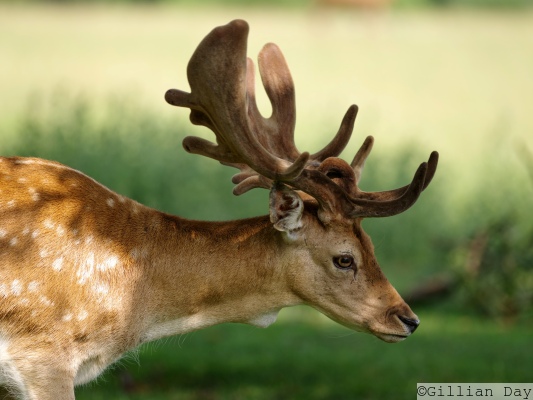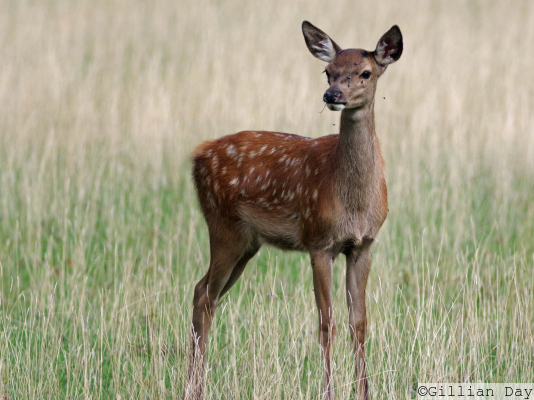Fallow Deer
Dama dama
<
>


 Type
Type Mammal
Mammal Status
Status Protected
Protected Season
Season All Year Round
All Year Round Anywhere along the canal – look out for one of these animals bounding out from neighbouring fields or woodland onto the towpath
Deer are certainly not the first species that would spring to mind when thinking about the Montgomery Canal, yet they’re frequently sighted here, perhaps using this vital wildlife corridor to move safely around the area or to use it as a water source.
Fallow Deer were originally introduced by the Normans, but they have now been here so long they’re considered naturalised. These elegant, medium-sized deer typically have spotted coats, making them easy to distinguish from other species, such as the Red Deer and the smaller Muntjac Deer. They’re common in deer parks throughout the UK, though are also found in deciduous or mixed woodland with large clearings where they’ll usually live in small herds. They eat grasses, herbs and broadleaf trees.
In the autumnal breeding season, known as the ‘rut’, male Fallow Deer make loud belly groans and put on physical displays – this is all about proclaiming their territory and fighting for the females. This can escalate in more dangerous conflict as the deer lock antlers. Fawns will be born the following summer.
Fallow Deer were originally introduced by the Normans, but they have now been here so long they’re considered naturalised. These elegant, medium-sized deer typically have spotted coats, making them easy to distinguish from other species, such as the Red Deer and the smaller Muntjac Deer. They’re common in deer parks throughout the UK, though are also found in deciduous or mixed woodland with large clearings where they’ll usually live in small herds. They eat grasses, herbs and broadleaf trees.
In the autumnal breeding season, known as the ‘rut’, male Fallow Deer make loud belly groans and put on physical displays – this is all about proclaiming their territory and fighting for the females. This can escalate in more dangerous conflict as the deer lock antlers. Fawns will be born the following summer.
The fallow deer is variable in colour, but is mostly pale gingery-brown, with white spots on the back, a characteristic black and white tail and a white rump patch outlined in black. Some animals are darker brown without any spots, and others are very pale, almost white. Males have broad, palmate antlers.
The Fallow Deer is easily distinguished from the Chinese Muntjac Deer, which is an invasive species that’s stocky and much smaller (the size of a dog).


